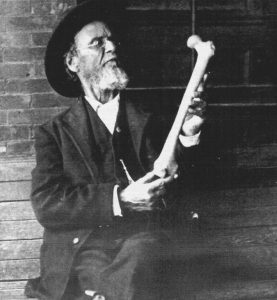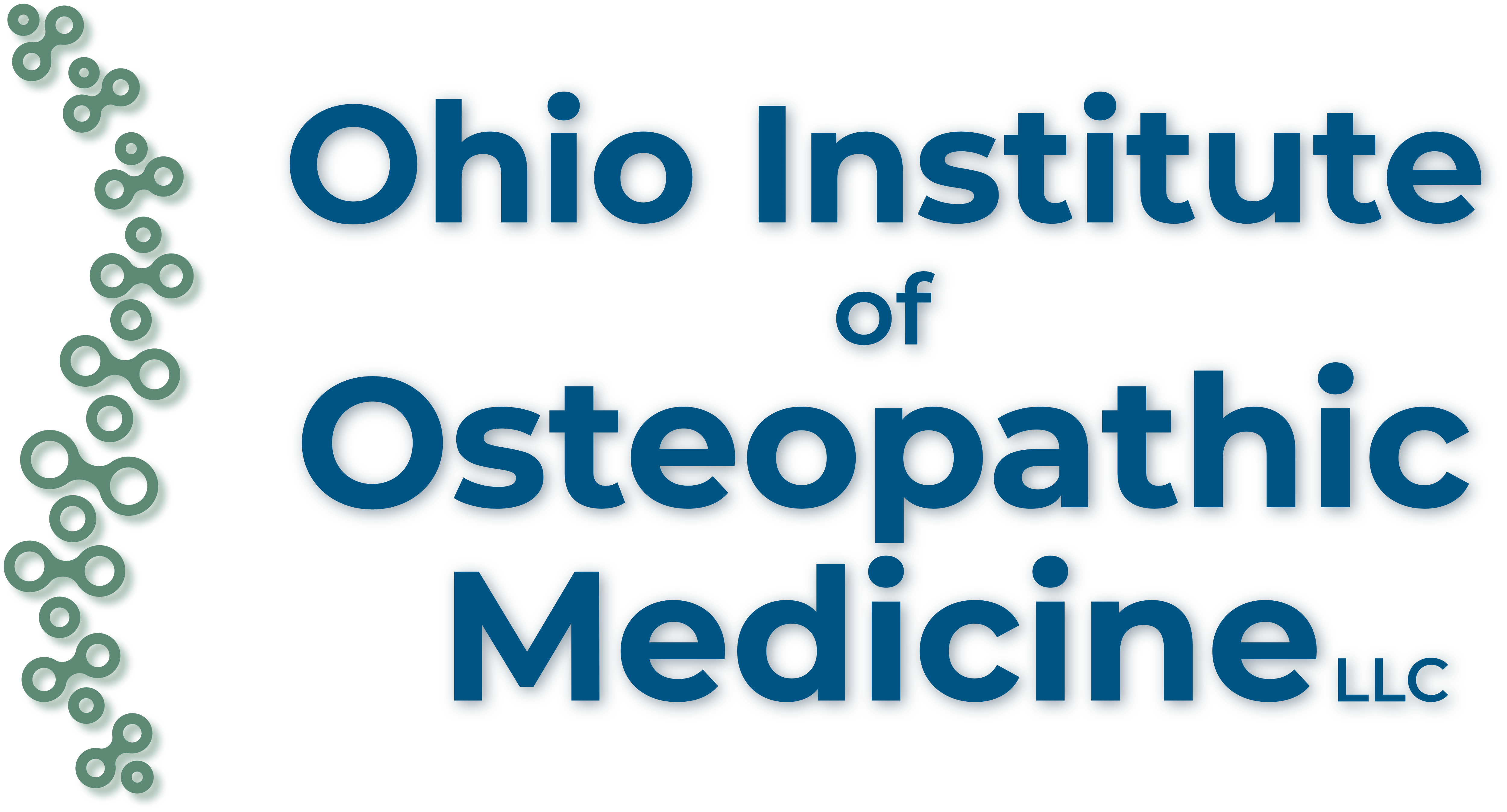
“To find health should be the object of the doctor. Anyone can find disease.”
– Andrew Taylor Still, DO
What is Osteopathic Manipulative Medicine?
Osteopathic physicians understand that every individual expresses health and disease differently. The absence of disease does not imply the presence of health. Osteopathic physicians are trained to recognize changes in body structure that alters function and contributes to disease. Osteopathic Manipulative Medicine is the application of osteopathic philosophy, structural diagnosis, and use of osteopathic manipulative treatment (OMT) in the diagnosis and management of an individual patient. OMT is the therapeutic application of manually guided forces by an osteopathic physician to improve physiological function.
Philosophy of Osteopathic Medicine
Doctors of Osteopathic Medicine are trained to promote the body’s natural tendency towards self healing. The tenets of osteopathic medicine express the philosophy of the profession:
- The body is a unit; the person is a unit of body, mind, and spirit.
- The body is capable of self-regulation, self-healing, and health maintenance.
- Structure and function are reciprocally interrelated.
- Rational treatment is based upon an understanding of the basic principles of body unity, self-regulation, and the interrelationship of structure and function.
Techniques Performed
Muscle Energy
A direct treatment method which the patient’s muscles are employed upon request, from a precisely controlled position, in a specific direction, and against a distinctly executed physician counterforce.
High Velocity Low Amplitude (HVLA)
Also called thrust treatment method. An osteopathic method in which the restrictive barrier is engaged in one or more planes of motion and then a rapid, therapeutic force of brief duration traveling a short distance is applied within the anatomic range of motion.
Strain-Counterstrain
An osteopathic method of diagnosis and indirect treatment in which the patient’s somatic dysfunction,
diagnosed by an associated myofascial tender point, is treated by using a position of spontaneous tissue release while simultaneously monitoring the tender point. Developed by Lawrence Jones, DO, FAAO, in 1955 (originally “spontaneous release by positioning”, it was later termed “strain-counterstrain”.
Myofascial Release
A treatment method first described by Andrew Taylor Still, MD, DO, and his early students, which utilizes continual palpatory feedback to alleviate restriction of the somatic dysfunction and its related fascia and musculature. Direct myofascial release: The dysfunctional myofascial tissues are loaded and restrictive barrier is engaged with a constant force. Indirect myofascial release: The dysfunctional myofascial
tissues are loaded and then guided towards the position of greatest ease.
Balanced Ligamentous Tension
A treatment method that is a regional interpretation based on the article “Osteopathic Technique of William G. Sutherland,” published in the 1949 Year Book of Academy of Applied Osteopathy. The method involves the minimization of peri-articular tissue load and the placement of the affected ligaments in a position of equal tension in all appropriate planes so that the body’s inherent forces can resolve the somatic dysfunction.
Facilitated Positional Release
A treatment method in which a dysfunctional body region is addressed with a combination of neutral positioning, application of an activating force (compression, torsion, or distraction), and placement into position of ease. A technique developed by Stanley Schiowitz, DO.
Functional Method
An indirect treatment utilizing passive regional motion input in multiple directions to encourage optimal ease of the somatic dysfunction. The osteopathic practitioner guides the manipulative procedure while the dysfunctional area is being monitored in order to obtain a continuous feedback of the neurophysiologic response to increased ease of motion.
Still Technique
A combined manipulative method utilizing both indirect and direct components. The dysfunctional region is first placed in an indirect position, an axial force (compression, traction, torsion) is added and then used to carry the region directly past neutral toward or through its restrictive barrier.
Articulatory
A direct treatment method employing a low velocity/moderate to high amplitude force applied to a dysfunctional joint. The osteopathic practitioner can choose to employ a repetitive springing motion or a single movement of the joint through the restrictive barrier.
Visceral Manipulation
Historically called ventral techniques. A method of diagnosis and treatment directed to the viscera and/or the supportive structures to improve physiologic function.
Lymphatic Technique
A diverse group of techniques designed to remove impediments to lymphatic circulation and promote and augment the flow of interstitial fluid and lymph.
Soft Tissue Technique
A group of direct techniques that usually involve lateral stretching, linear stretching, deep pressure, traction and/or separation of muscle origin and insertion while monitoring tissue response and motion changes by palpation. Historically considered a form of myofascial treatment.
Osteopathic Cranial Manipulative Medicine (OCMM)
A system of diagnosis and treatment by an osteopathic practitioner using the primary respiratory mechanism and balanced membranous tension.
History of Osteopathic Medicine
Andrew Taylor Still, DO
Founder of Osteopathic Medicine
The Story of the Discovery of Osteopathy
In the words of Andrew Taylor Still, DO
“I was born and raised to respect and confide in the remedial power of drugs, but after many years of practice in close conformity to the dictations of the very best medical authors and in consultation with representatives of the various schools, I failed to get from drugs the results hoped for and I was face to face with the evidence that medication was not only untrustworthy but was dangerous.
The mechanical principles on which osteopathy is based are as old as the universe. I discovered them while I was in Kansas. You can call this discovery accidental or purely philosophical. I was in the practice of medicine and had been for several years. I treated my patients as other doctors did. A part of them got well and a part died. Others, both old and young, got sick and got well without the assistance of the medical doctor.
As I was an educated engineer of five years schooling I began to look at the human framework as a machine and to examine all its parts to see if I could find any variation from the truly normal among its journals, belts, pulleys and escape pipes. I began to experiment with man’s body as a master mechanic would when he had in his charge any machinery which needed to be kept perfectly adjusted and in line in order to get perfect work. I worked along patiently, faithfully and hopefully, finding out that the human body was just as liable to strains and variations as a steam engine, and that after correcting the strains and variations health was sure to follow. I was many years philosophizing, comparing and noticing results which followed taking off strains and pressure. I was surprised to see that fever, congestion and all irregularities gave way, health returned and the results were good and satisfactory.
I found mechanical causes for disordered functioning, of poor work of the head, neck, thorax, abdomen, pelvis or extremities. I adjusted the body framework and secured such good results that I was encouraged to keep on and on until now I can trustfully say that I am satisfied that osteopathy is the natural way by which all the diseases to which the human body is heir can be relieved, and a large majority of them cured.
Osteopathy is based upon the perfection of Nature’s work. When all the parts of the body are in line we have health. When they are note the effect is disease. When the parts are readjusted, diseases give place to health. The work of the osteopath is to ADJUST the body from the abnormal to the normal; then the abnormal condition gives place to the normal and health is the result of the normal condition.
Man cannot add anything to Nature’s perfect work nor improve the functioning of the normal body. Disease is an effect only, and a positive proof that a belt is off, a journal bent, or a cog broken or caught. Man’s power to cure is good as far as he has a knowledge of the right or normal position and so far as he has the skill to adjust the bones, muscles and ligaments and give freedom to nerves, blood, secretions and excretions and no farther.”
Excerpt from “Osteopathy The Science of Healing by Adjustment” by Percy H. Woodall, MD, DO
